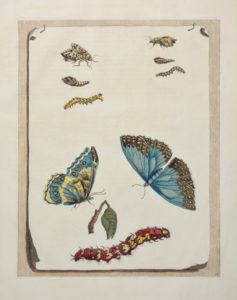The McClung plays a big role in the UT experience for many members of our campus community. To highlight these connections, we asked UT faculty and staff to tell us about an object in our collection that has impacted their classes, their students, or their own exploration within the museum.
 According to the McClung’s own Curator of Academic Programs, Katy Malone: “Asking for a favorite object is asking for the impossible! My ‘favorite’ changes every time I present materials from our collections or one of our exhibitions to a class or tour group.” Katy is in charge of educating UT college students and adult groups from the greater community. She continues, “When I facilitate conversations with students and they look deeply at an artwork or an artifact, they can have incredible observations. The learning process that results from our discussions are the best part of my job.”
According to the McClung’s own Curator of Academic Programs, Katy Malone: “Asking for a favorite object is asking for the impossible! My ‘favorite’ changes every time I present materials from our collections or one of our exhibitions to a class or tour group.” Katy is in charge of educating UT college students and adult groups from the greater community. She continues, “When I facilitate conversations with students and they look deeply at an artwork or an artifact, they can have incredible observations. The learning process that results from our discussions are the best part of my job.”

“Study of Butterflies, Caterpillar, Pupa, and Chrysalis,” from “Metamorphosis Insectorum Surinamensium,” Maria Sibylla Merian, 1719, Hand-colored engraving, Museum purchase made possible by John Glynn, 2016.7.2.
“So for this request,” Katy decides, “I have elected to choose a work that I connect with more personally. Maria Merian has always been an important influence for me. She defied the social expectations of her time period and gender. Her work is beautiful and groundbreaking both scientifically and artistically. I admire and look to her as a role model for my own artistic practice.”
Though the odds were stacked against her as a woman, naturalist, and illustrator, Maria Sibylla Merian, is among the most important contributors to the field of natural history. In 1699 she traveled to South America with her daughter to study insects in Suriname, resulting in the publication of her magnum opus, Metamorphosis Insectorum Surinamensium.
Like other natural histories of the 1700s, Metamorphosis Insectorum emphasized beautiful illustration. But while the trompe l’oeil effect of specimens “pinned” to the page in this print is a nod to fine art, the book was a serious scientific text, and included the first studies of the life cycle of butterflies. The book helped disprove the idea of spontaneous generation, and is considered one of the most important natural history books of all time.
Katy states: “When I learned that the McClung had prints from her masterpiece, Metamorphosis Insectorum, I was starstruck, and it felt like an omen. I had just moved from my hometown to a new place, community, and museum. Her work’s presence signaled that I had made the right choice.” Katy joined the McClung’s team in July 2018 from the Atlanta area in Georgia.
This print along with another work by Merian is featured in the McClung’s temporary exhibition, Women’s Work, during the spring of 2021.